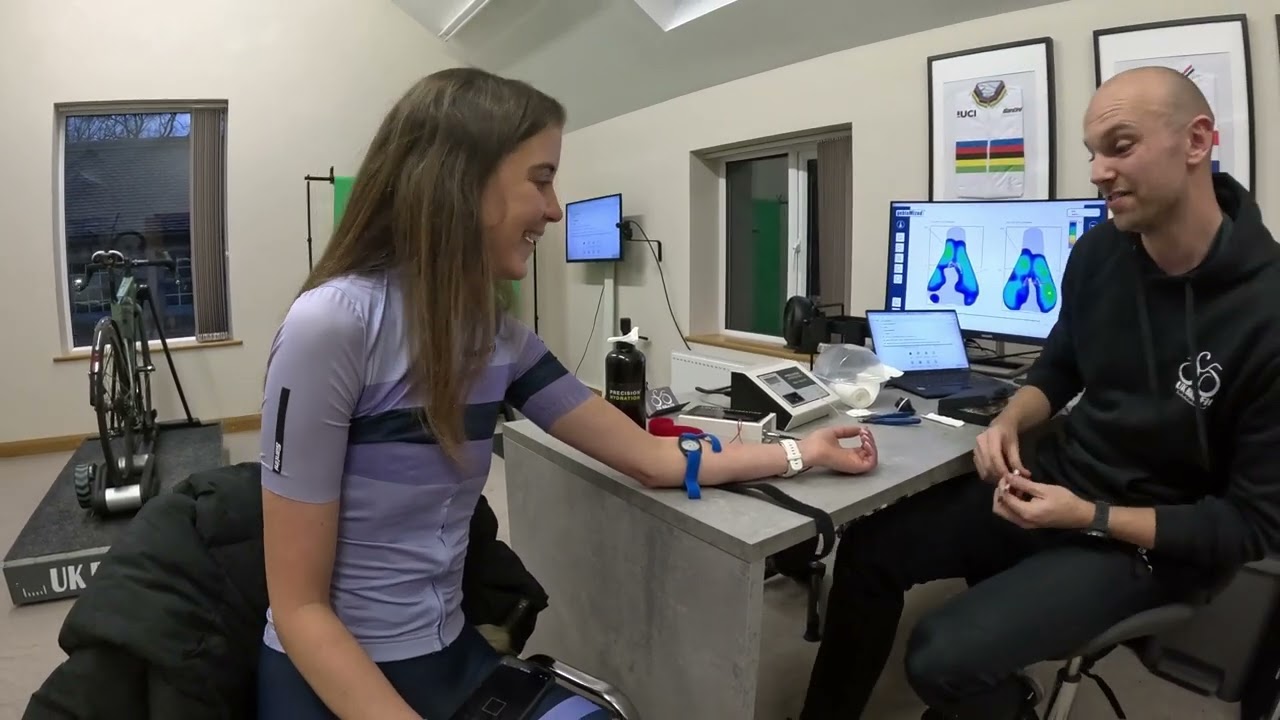SWEAT TEST – HOW SALTY AM I? | Amy Cycling Adventures
Source: Amy Cycling Adventures Youtube Channel: SWEAT TEST – HOW SALTY AM I?
Video SWEAT TEST – HOW SALTY AM I? with Amy Cycling Adventures
Video SWEAT TEST – HOW SALTY AM I? with Amy Cycling Adventures YouTube Channel.
SWEAT TEST – HOW SALTY AM I?
Amy’s Cycling Adventures: The Importance of Sweat Testing for Hydration and Performance
Amy and Kyle are back with another adventure in the world of cycling. This time, they’re diving into the world of sweat testing and the impact it can have on hydration and performance while on the bike.
What is a Sweat Test and Why Does it Matter?
Sweat testing is the process of measuring the sodium concentration in your sweat to determine how much you need to hydrate while cycling. Amy admits to being guilty of not hydrating enough during her rides, often forgetting her water or only drinking minimal amounts. This can lead to under-hydration, which can have serious consequences on her performance and health.
The Importance of Hydration on the Bike
From cramping and bonking to decreased performance and increased fatigue, not hydrating properly during cycling can have a range of negative effects. Amy and Kyle emphasize the fact that many cyclists may not even realize they are under-hydrated until it’s too late. The sweat test provides a simple and quick solution to this problem, offering a personalized hydration plan based on individual sweat sodium concentration.
The Sweat Test Process
The sweat test process is relatively simple and non-invasive. Amy and Kyle demonstrate the process, which involves wetting the skin and using gel discs to transmit small electrical currents, causing the skin to sweat. The sweat is then collected and analyzed to determine the sodium concentration. This concentration is genetic and will remain consistent throughout a cyclist’s life, meaning only one test is needed.
Interpreting the Results
The results of the sweat test reveal Amy’s sodium concentration to be above average. This means she loses about 1200 milligrams of sodium per liter of sweat, making her a “salty sweater.” This information is crucial for determining the amount of electrolytes she needs to incorporate into her hydration plan to ensure she maintains peak performance and avoids any negative health implications.
The Impact on Performance and Health
Amy shares her observation of the negative impact of under-hydration on her performance, citing instances where she struggled on long rides due to lack of proper hydration. This emphasizes the importance of sweat testing and using the results to tailor a personalized hydration plan to ensure a consistent and appropriate intake of electrolytes during cycling.
The Role of Electrolytes in Hydration
Amy and Kyle stress the importance of electrolytes in hydration, explaining that simply drinking water during cycling may not be sufficient as it can lead to a dilution of electrolytes in the body. They highlight the significance of maintaining the correct concentration of electrolytes in the body and how it can make a difference in overall performance and wellbeing.
Creating a Hydration Plan
Based on the sweat test results, Amy is now aware of her specific sodium loss and can develop a plan to replace the lost electrolytes during her rides. This plan will involve preloading with electrolytes before rides, maintaining a consistent intake of electrolytes during cycling, and properly rehydrating after rides. Amy is also considering using reminder alerts on her Garmin to prompt her to drink and maintain her electrolyte levels during rides.
The Learning Curve and Moving Forward
Amy’s journey through the sweat testing process has shed light on her own hydration needs and the importance of maintaining proper electrolyte levels during cycling. She emphasizes the potential consequences of neglecting hydration, and the impact it can have on long rides and overall performance. Through sweat testing, she has gained valuable insight into her body’s specific hydration requirements, and is now equipped to create a plan that optimizes her performance and health on the bike.
In conclusion, sweat testing serves as a crucial tool for cyclists to understand their individual hydration needs and to tailor a plan that ensures optimal performance and health while on the bike. Amy and Kyle’s adventure into sweat testing has highlighted the importance of maintaining proper hydration and electrolyte levels during cycling, ultimately showcasing the impact it can have on a cyclist’s overall experience on the road. With this newfound knowledge, Amy is ready to tackle her future cycling adventures with a renewed focus on proper hydration and performance optimization.
The opinions expressed in this space are the sole responsibility of the YouTube Channel Amy Cycling Adventures and do not necessarily represent the views of CicloNews.










